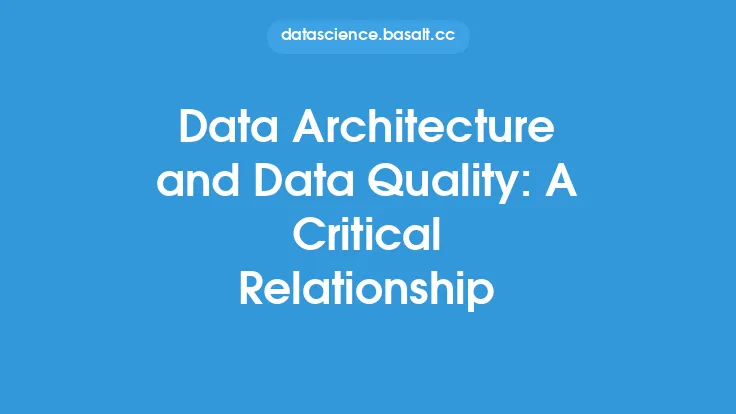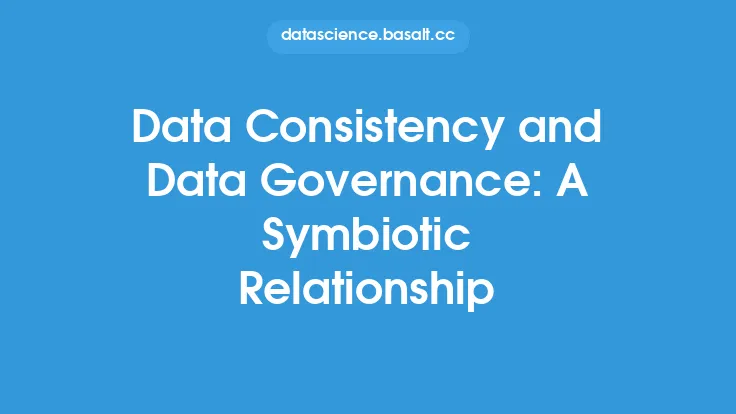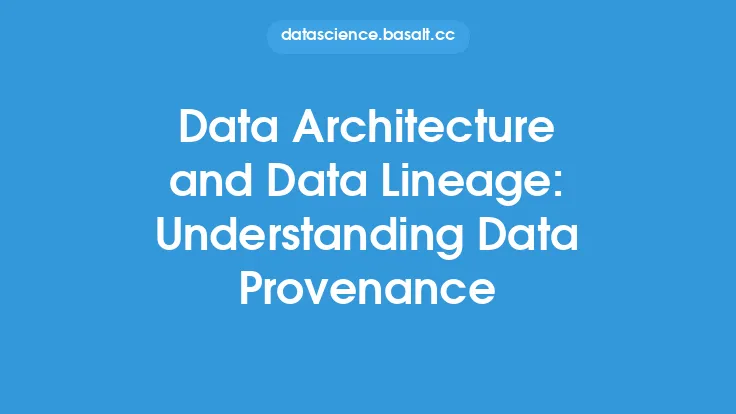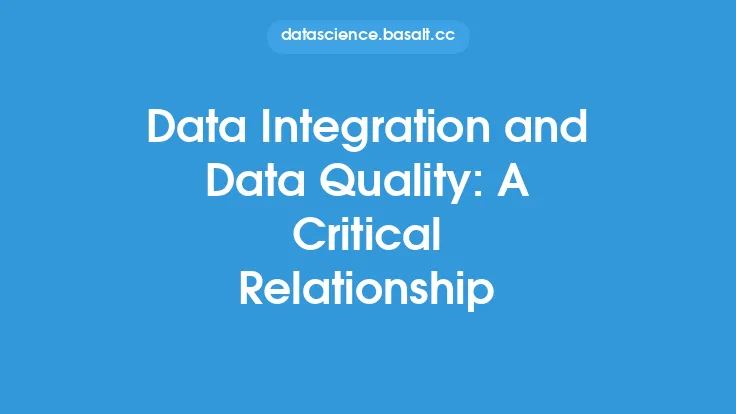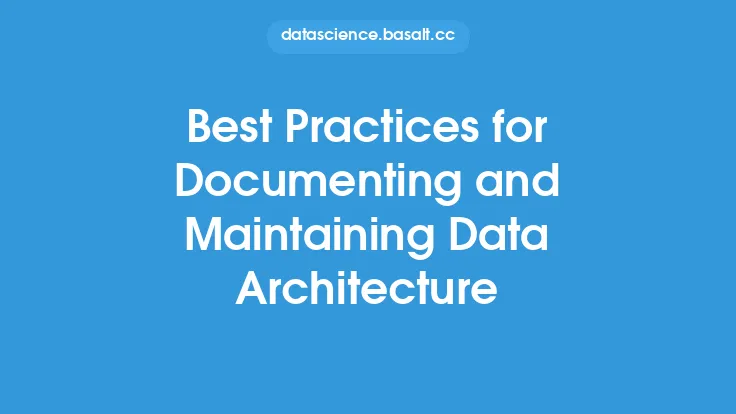In the realm of data governance, data architecture and data quality are two interconnected components that form the foundation of a robust and efficient data management system. A well-designed data architecture provides the framework for storing, processing, and retrieving data, while data quality ensures that the data is accurate, complete, and reliable. A holistic approach to data architecture and data quality is essential for organizations to make informed decisions, improve operational efficiency, and maintain a competitive edge.
Introduction to Data Architecture
Data architecture refers to the overall structure and organization of an organization's data assets, including the relationships between different data entities, the data flow, and the data storage systems. It encompasses the design, implementation, and maintenance of the data management systems, including databases, data warehouses, data lakes, and data pipelines. A good data architecture should be scalable, flexible, and adaptable to changing business needs, and should provide a single, unified view of the organization's data assets.
Data Quality: A Critical Component
Data quality is a critical component of data architecture, as it ensures that the data is accurate, complete, and reliable. Data quality issues can arise from various sources, including data entry errors, data integration errors, and data corruption. Poor data quality can have significant consequences, including incorrect decision-making, wasted resources, and damaged reputation. To ensure high data quality, organizations should implement data validation, data cleansing, and data normalization processes, as well as establish data quality metrics and monitoring systems.
Data Governance and Data Architecture
Data governance is the overall management framework that ensures the quality, security, and integrity of an organization's data assets. It includes the policies, procedures, and standards that govern the management of data across the organization. Data governance is closely tied to data architecture, as it provides the framework for designing, implementing, and maintaining the data management systems. A well-designed data governance framework should include data architecture, data quality, data security, and data compliance components, and should be aligned with the organization's overall business strategy.
Data Architecture Patterns
There are several data architecture patterns that organizations can use to design and implement their data management systems. These patterns include the hub-and-spoke pattern, the point-to-point pattern, and the data lake pattern. The hub-and-spoke pattern involves a central data hub that connects to multiple data sources and systems, while the point-to-point pattern involves direct connections between data sources and systems. The data lake pattern involves a centralized data repository that stores raw, unprocessed data, which can be processed and analyzed as needed.
Data Storage Systems
Data storage systems are a critical component of data architecture, as they provide the infrastructure for storing and managing data. There are several types of data storage systems, including relational databases, NoSQL databases, data warehouses, and data lakes. Relational databases are designed for structured data and provide strong data consistency and integrity, while NoSQL databases are designed for unstructured or semi-structured data and provide high scalability and flexibility. Data warehouses are designed for analytical workloads and provide fast query performance and data aggregation, while data lakes are designed for raw, unprocessed data and provide high storage capacity and flexibility.
Data Processing and Analytics
Data processing and analytics are critical components of data architecture, as they provide the capabilities for transforming, aggregating, and analyzing data. There are several data processing and analytics technologies, including batch processing, stream processing, and machine learning. Batch processing involves processing large datasets in batches, while stream processing involves processing data in real-time as it is generated. Machine learning involves using algorithms and statistical models to analyze and predict data patterns.
Data Security and Compliance
Data security and compliance are critical components of data architecture, as they ensure the confidentiality, integrity, and availability of an organization's data assets. There are several data security and compliance technologies, including encryption, access control, and auditing. Encryption involves protecting data with cryptographic algorithms, while access control involves controlling who can access and modify data. Auditing involves monitoring and logging data access and modifications to ensure compliance with regulatory requirements.
Best Practices for Data Architecture and Data Quality
There are several best practices that organizations can follow to ensure a robust and efficient data architecture and high data quality. These best practices include designing a scalable and flexible data architecture, implementing data validation and data cleansing processes, establishing data quality metrics and monitoring systems, and providing ongoing training and support for data management staff. Additionally, organizations should establish a data governance framework that includes data architecture, data quality, data security, and data compliance components, and should align their data management systems with their overall business strategy.
Conclusion
In conclusion, data architecture and data quality are two interconnected components that form the foundation of a robust and efficient data management system. A holistic approach to data architecture and data quality is essential for organizations to make informed decisions, improve operational efficiency, and maintain a competitive edge. By designing a scalable and flexible data architecture, implementing data validation and data cleansing processes, and establishing data quality metrics and monitoring systems, organizations can ensure high data quality and improve their overall data management capabilities. Additionally, by establishing a data governance framework that includes data architecture, data quality, data security, and data compliance components, organizations can ensure the confidentiality, integrity, and availability of their data assets and maintain regulatory compliance.
